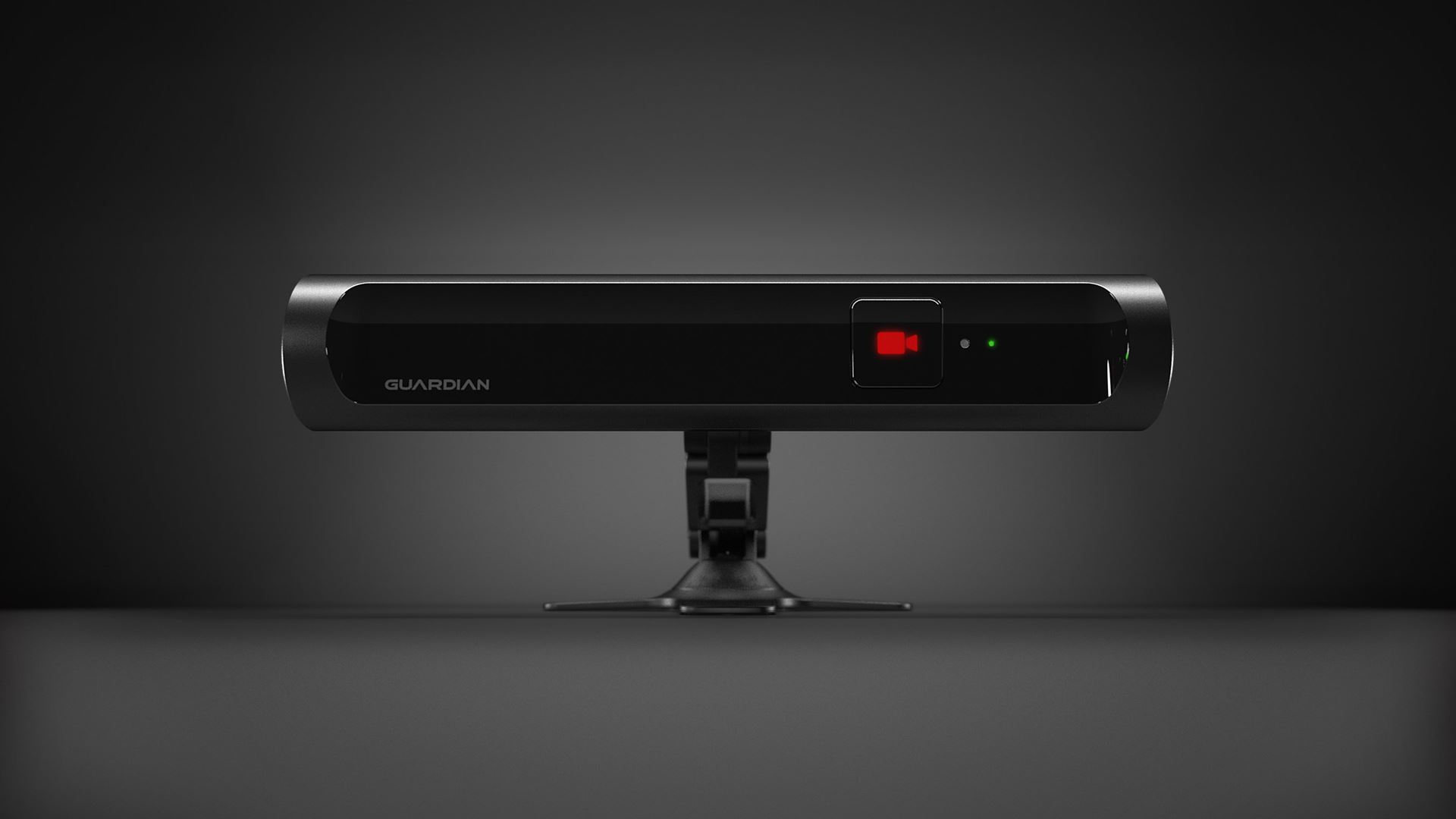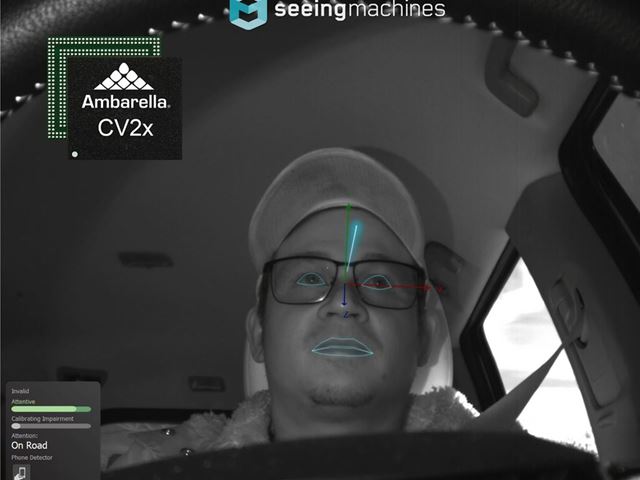
- Latest: Welcome to Auto Futures - Mobility News, Features, Exclusives and More...
- Latest: Subaru Europe Unveils the Brand's First All-Electric Compact SUV
- Latest: Lucid, Nuro & Uber Partner on Next-Generation Autonomous Robotaxi Service
- Latest: GM & Redwood Materials to Repurpose EV Batteries for Energy Storage
- Latest: Stellantis Discontinues Hydrogen Fuel Cell Technology Development Program
- Latest: Paving the way for an Electrified Future - L-Charge CEO
Observing Human Behaviour to Detect Fatigue and Distraction - Seeing Machines' CEO Paul McGlone
Rahul Dutta Roy
- Dec 20 2022

Born in the robotics lab of Canberra’s Australian National University (ANU) almost 22 years ago, Seeing Machines was the brainchild of founders Sebastien Rougeaux and Tim Edwards, who are still with the company today. But four years back, Paul McGlone took over as the CEO of Seeing Machines, and since then, there have been some major developments for this robotics-led Driver Management System (DMS) company.
“Our founders were contemplating a future, where there was a strong interaction between humans and machines. They realised that cars would be the first machines or robots that would interact with humans in a major way, so they shifted their focus on to the Human Vehicle Interface and that's how the whole thing started. There are all kinds of technologies in vehicles today," says McGlone.
"Our team focused on the interior of the vehicle, focusing specifically on the human to try and understand the points where the human was disengaged with the job at hand - driving."
Its technology is very accurate in observing human behaviour to detect fatigue and distraction, the two primary conditions that are the causes of road fatality.
"After all the effort and years of trying to hone this area, we now specialise in the commercial vehicles - freight vehicles, trucks, trains, trams, mining vehicles and even aviation. Our sole focus is getting people home safely and to reducing road deaths,” adds McGlone.
It seems the market is unaware of the current prevalence of driver monitoring technology or the interior sensing space and all that it can do. But this is going to change soon.
From 2025, Euro NCAP and the European Commission require vehicles to have a camera-based driver monitoring system. Seeing Machines was the first company to demonstrate this technology to Euro NCAP and the European Commission. As a consequence, this regulation will now see the light of day.
“So far, we're the only software company that developed the ability to package driver and occupant monitoring in a single camera in a single location, call it the rear view mirror that can do both jobs, high fidelity observance of the driver and the lower fidelity observance of everything else that's going on, and finally, processing these signals in real-time to trigger a whole series of alerts."
“We're looking at more than one person. Not only are we looking at the driver, but also the passengers in the front seat, rear seat and even, perhaps, the third-row seat. The problem that most people don't understand is that you have to do these things together. When you're monitoring the occupant, you need a camera relatively high up in the vehicle looking at a whole landscape and it tends to be at a far lower fidelity. In stark contrast, when you're looking at the driver, you look, in particular, at the pupil. It has to be very specific, at a very high level of fidelity and a very high level of performance," he adds.

Keeping Drivers Alert
Seeing Machines actually started in the aftermarket business selling products for mining trucks and then road freight trucks. Its technology is in about 40,000 vehicles today.
"We have one of the world's largest sets of naturalistic driving data that covers every edge case you can imagine in driving. It is access to this data that provides the basis for us to develop very accurate high performing algorithms. The real secret of being successful is that you've got to deliver the performance, but you have to deliver it at the lowest possible price. We call this our systems approach. We don't just sell algorithms of software, but we also advise on the system design,” explains McGlone.
While Seeing Machines’ tends to collaborate with OEM teams at the point of new car design, where its software is then engineered into the vehicle and integrated into a whole bunch of other applications inside the car, things are a little different in the aftermarket side of things, which consists of trains, trams, buses and trucks. Since this is a single driver application, it is primarily about the driver.
The aftermarket system is similar to a telematics box, which would alert the driver experiencing a fatigue or micro-sleep distraction event through a haptic vibration in the seat that could wake them. It is also connected to a 24/7 service centre, which engages the fleet manager to let them know about the incident, and then there'd be an intervention plan, where that fleet manager would perhaps pull the truck off the road or ask the driver to have a sleep.

A Business That's Driven by Regulations
Among OEMs, the company is working with Daimler, Mercedes-Benz and General Motors and more than half a dozen Tier-1s, which it expects to narrow over time. At present, Seeing Machines has 14 discreet programmes running with 10 OEMs. However, the company is at an inflection point, where it is starting to narrow its focus on the Tier-1s, who act as conduits to work with OEMs.
The company partnered with Magna a little while ago, which brought significant funding into the business, meaning that it is comfortably funded and can focus on delivering more.
“I'm super excited about our current position and the current trajectory. Our business has been driven by regulations,” says McGlone.
Today Seeing Machines is on-road in about half a million cars and 40,000 trucks. It expects that number to double year on year.
"There are 100 million cars manufactured each year. I expect we will be in half of those within the next 5-6 years. Through that trajectory, we could be in 40 or 50 million vehicles per annum. We're very focused on the problem or the opportunity of today, which is winning as much share as we can in this next year or two in the lead up to the Euro NCAP end date, and then delivering on these complex programmes, so that we can maximise our share across as many OEMs as possible," he predicts.
“Moving further beyond, there are multiple pathways. We have a very interesting view of the future of autonomous interior sensing, where we move from 2D to 3D, or other layers of technical capability that can enrich the things that we do today and we see that go a very long way. While we’re focused on safety, there are other applications for the level of accurate eye tracking that we deliver - health, marketing, security, and a whole range of things,” concludes McGlone.
Popular Categories
